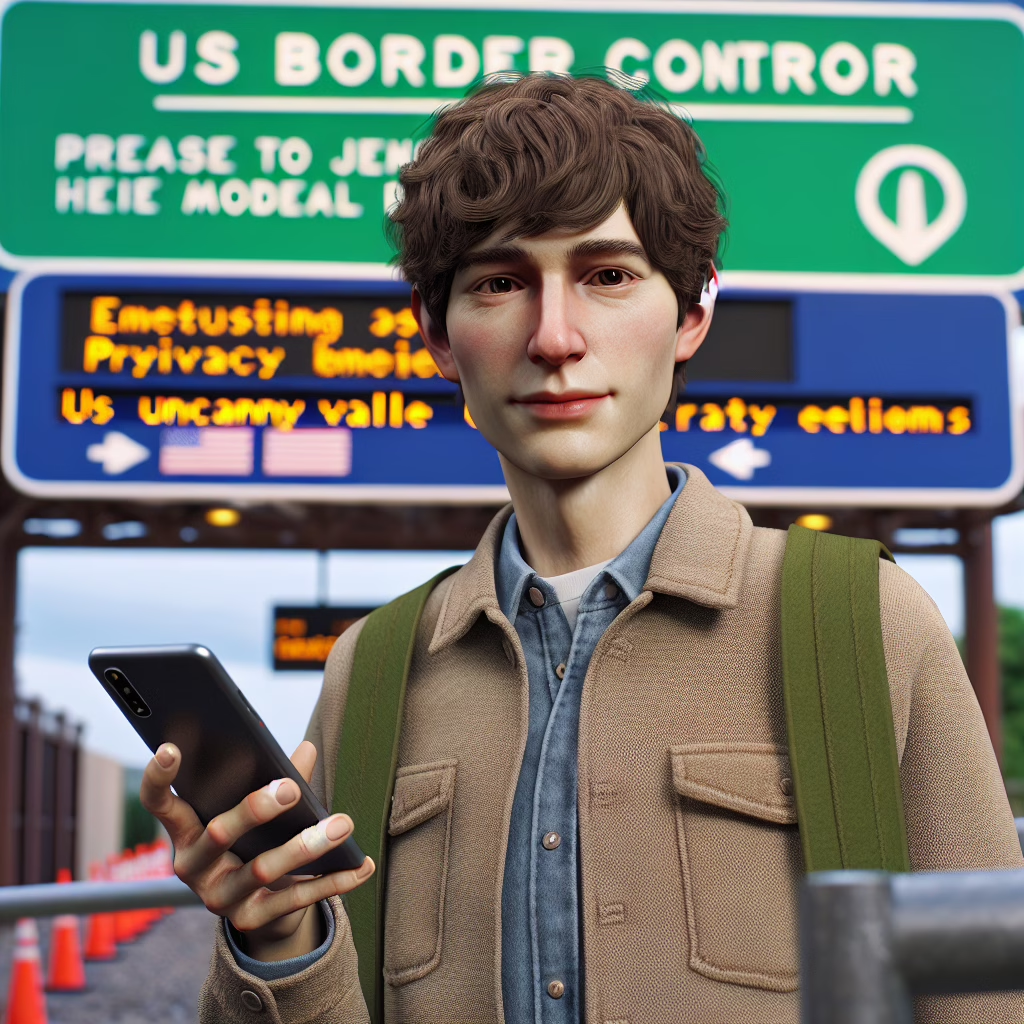As you pack your bags for a delightful getaway in 2025, don’t forget to consider one tiny little detail: your phone privacy. Yes, that glowing rectangle of connectivity and distraction that you can’t live without! With the uncanny valley of digital security looming at the US border, it’s time to dive into what you need to know to protect your precious data while keeping a sense of humor about it all.
The Uncanny Valley of Phone Privacy
First off, let’s address the elephant in the room—or should we say the smartphone? The uncanny valley refers to a phenomenon where something that looks almost human (like your phone’s face recognition feature) can evoke discomfort or eeriness. When it comes to phone privacy, this means that while technology has advanced leaps and bounds, our trust in it has not quite caught up. So, how can you ensure your phone privacy stays intact as you cross those borders?
Before You Board: Tips for Phone Privacy
Before you even think about boarding that flight, there are a few steps you should take to ensure your phone privacy remains intact:
- Update Your Software: Just like your wardrobe needs an update now and then (goodbye, cargo shorts!), so does your software. Keeping everything up-to-date ensures that pesky bugs don’t compromise your data.
- Use Strong Passwords: If “123456” is still your go-to password, it’s time for a change. Consider using a password manager—because who has time to remember all those complex combinations?
- Enable Two-Factor Authentication: Think of this as putting two locks on your door instead of just one. It may seem like overkill, but when it comes to phone privacy, better safe than sorry!
Now that you’ve prepared yourself before takeoff, let’s chat about what happens when you hit the border.
Navigating Phone Privacy at the Border
The moment you arrive at the US border, it’s essential to be aware that customs officials have the power to ask for access to your devices. Yes, even that cute little gadget that holds all your travel selfies! But fear not—there are ways to navigate this situation with grace:
- Know Your Rights: Familiarize yourself with the laws regarding phone privacy. You may not be able to simply say “no” when asked for access, but understanding what officials can and cannot do will empower you.
- Travel Light: Consider leaving non-essential data behind. If possible, travel with a device that’s been wiped clean of sensitive information. Think of it as a minimalist approach—after all, less is more!
- Use Encryption: Encryption is like a digital bodyguard for your information. By encrypting sensitive files or messages, you’re making sure that if anyone gets a peek at your device, they won’t find anything scandalous!
The Aftermath: Post-Travel Phone Privacy
Congratulations! You’ve made it through international borders without losing your sanity—or your data. But don’t hang up your metaphorical hat just yet; there are still steps to follow once you return home:
- Change Your Passwords Again: This might feel like overkill (again), but consider changing passwords for any accounts accessed during travel. It’s like giving your digital house a fresh coat of paint.
- Review Your Apps: Take a look at any new apps downloaded during your travels and assess their permissions. If they seem too nosy (you know, asking for access to everything from your contacts to your cat videos), it might be time for them to go!
- Monitor Your Accounts: Keep an eye on bank statements and other sensitive accounts for any suspicious activity. Better safe than sorry—because we all know how quickly someone can turn an innocent vacation into a horror story.
Your phone privacy doesn’t have to feel like navigating through an uncanny valley of confusion and discomfort. With these tips in mind, you’ll be ready to tackle travel in 2025 while keeping your data secure—and maybe even cracking a smile along the way!
If you’ve had experiences or tips about phone privacy at borders or just want to share how you managed through the uncanny valley of tech security while traveling, drop us a comment below! We’d love to hear from you.
A big thank you to Wired for inspiring this article with their insightful coverage on phone privacy issues!

